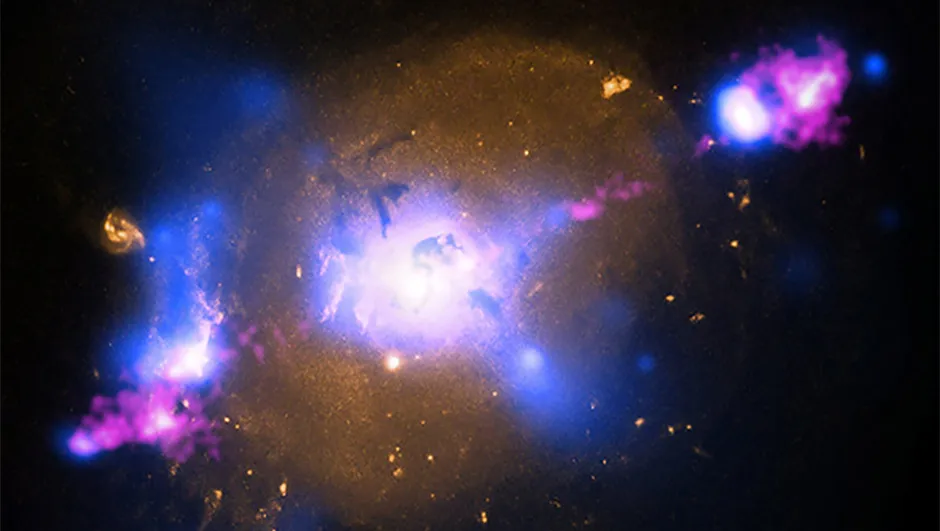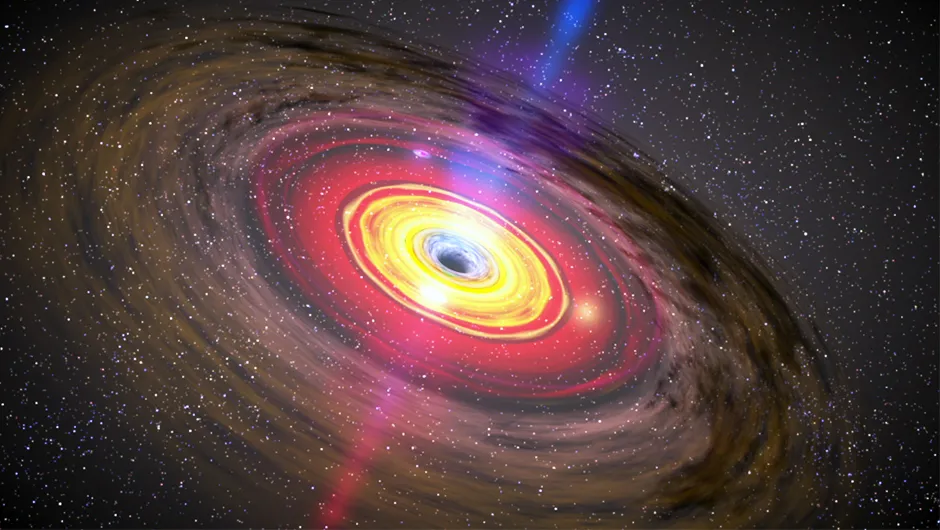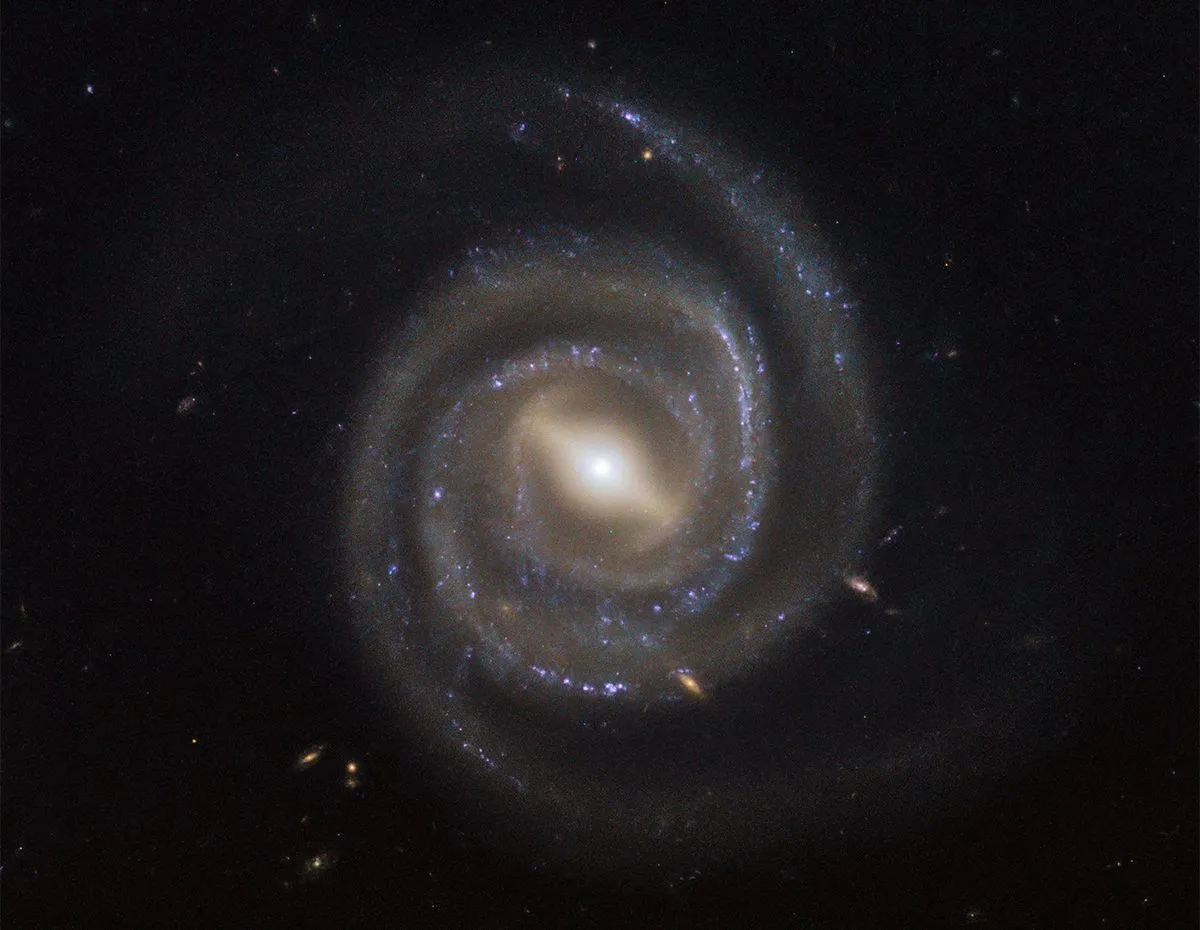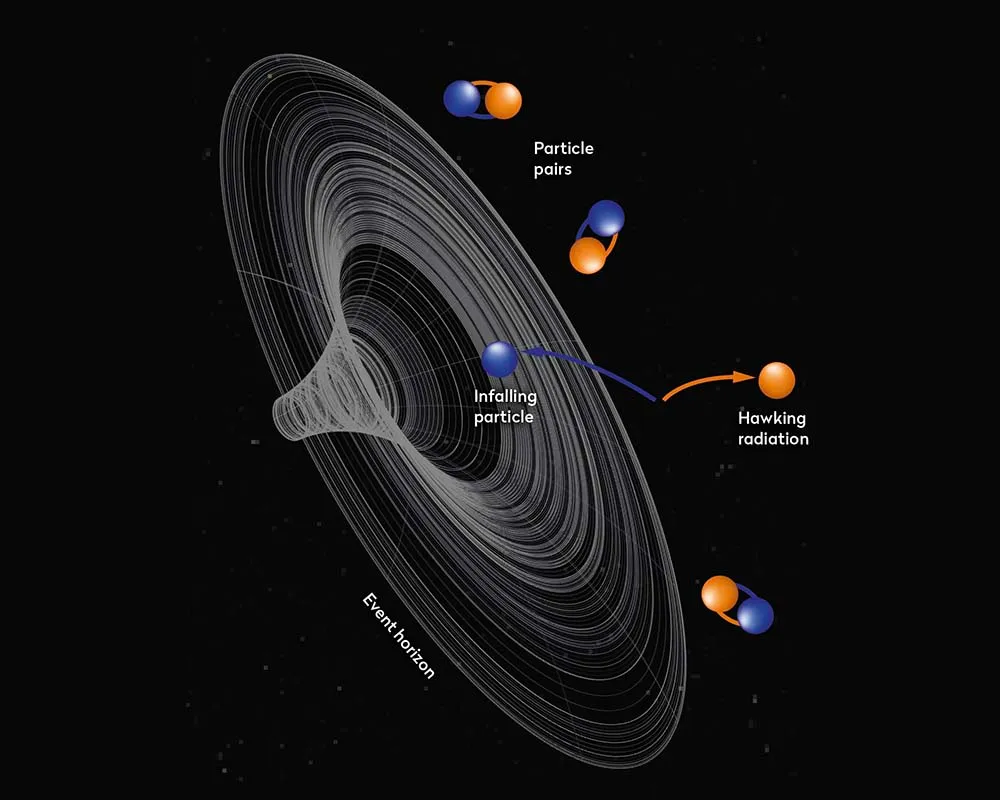You may have heard that black holes give off light; that the bright cores seen in galaxies are a result of the supermassive black holes at their centres.
If black holes are so dense that not even light can escape their gravity, how then can a black hole be bright?
Some of the most famous and enigmatic objects in the Universe, black holes form when the most massive stars die.
The star explodes as a supernova and its core irreversibly collapses.
Eventually there is so much mass concentrated into such a small volume that the object's escape velocity exceeds the speed of light.

Black hole vs light: who wins?
As the name suggests, the escape velocity is how fast you'd have to travel to clamber out of the object's gravitational embrace.
The speed of light is the fastest possible speed in the Universe, so if you have to travel faster than that to escape then you can't.
Any light falling onto a black hole cannot reflect back to us, hence why we call them black.
Anything can be a black hole if dense enough.
Shrink the Earth down to the size of your fingernail and its escape velocity would exceed the speed of light.
Understanding the event horizon

Despite the name, you'll often see animations and videos of black holes with long jets streaming away from them and a bright melee of material around them.
It is here that an important distinction needs to be made regarding what constitutes inside and outside the black hole.
The point of no return – the place where the escape velocity exceeds the speed of light - is known as the black hole's event horizon.
Nothing can be seen beyond it.

However, the gravity of a black hole is so extreme that material is constantly being pulled towards it.
This infalling material forms a queue called an accretion disc that swirls around the black hole.
Material in the accretion disc gets very hot and magnetic fields there can be very strong.
This causes the accretion disc to glow and can even power jets of material that shoot away from the black hole.
However, this is all taking place just outside the event horizon where the escape velocity is less than light speed.
Material still isn't escaping from inside the black hole, merely its immediate surroundings. It's just one of the ways that we can spot black holes even though we can't see them directly.
Active Galactic Nuclei

Astronomers think that most galaxies have a supermassive black hole at their centre.
One that tips the scales at millions and sometimes even billions of times the mass of the Sun.
The appetites of some supermassive black holes are particularly voracious, meaning they have intense accretion discs and jets.
Such places are known as Active Galactic Nuclei. They are so bright that they can be seen for billions of light years, a distance far too far to see the galaxy itself.
Hawking radiation

Black holes are also thought to glow in another way, although it has never been observed.
It is known as Hawking radiation, after the famous physicist Stephen Hawking.
Pairs of particles are constantly popping into existence along the event horizon and they can never recombine because one is forever trapped inside the black hole.
In this way, a black hole should slowly give up energy and shrink, an effect known as black hole evaporation.
This is potentially how a black hole could actually die, rather than exist indefinitely.
